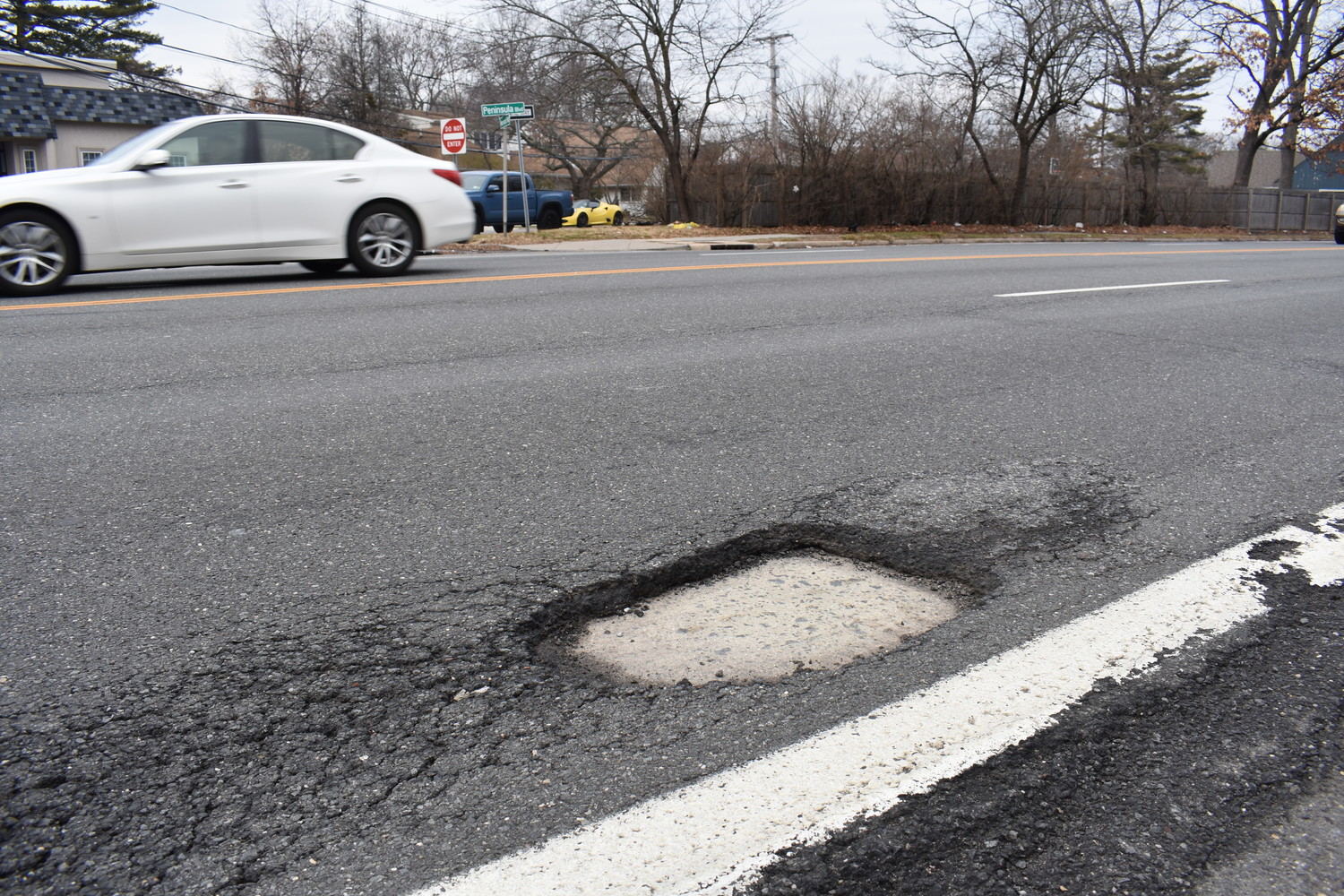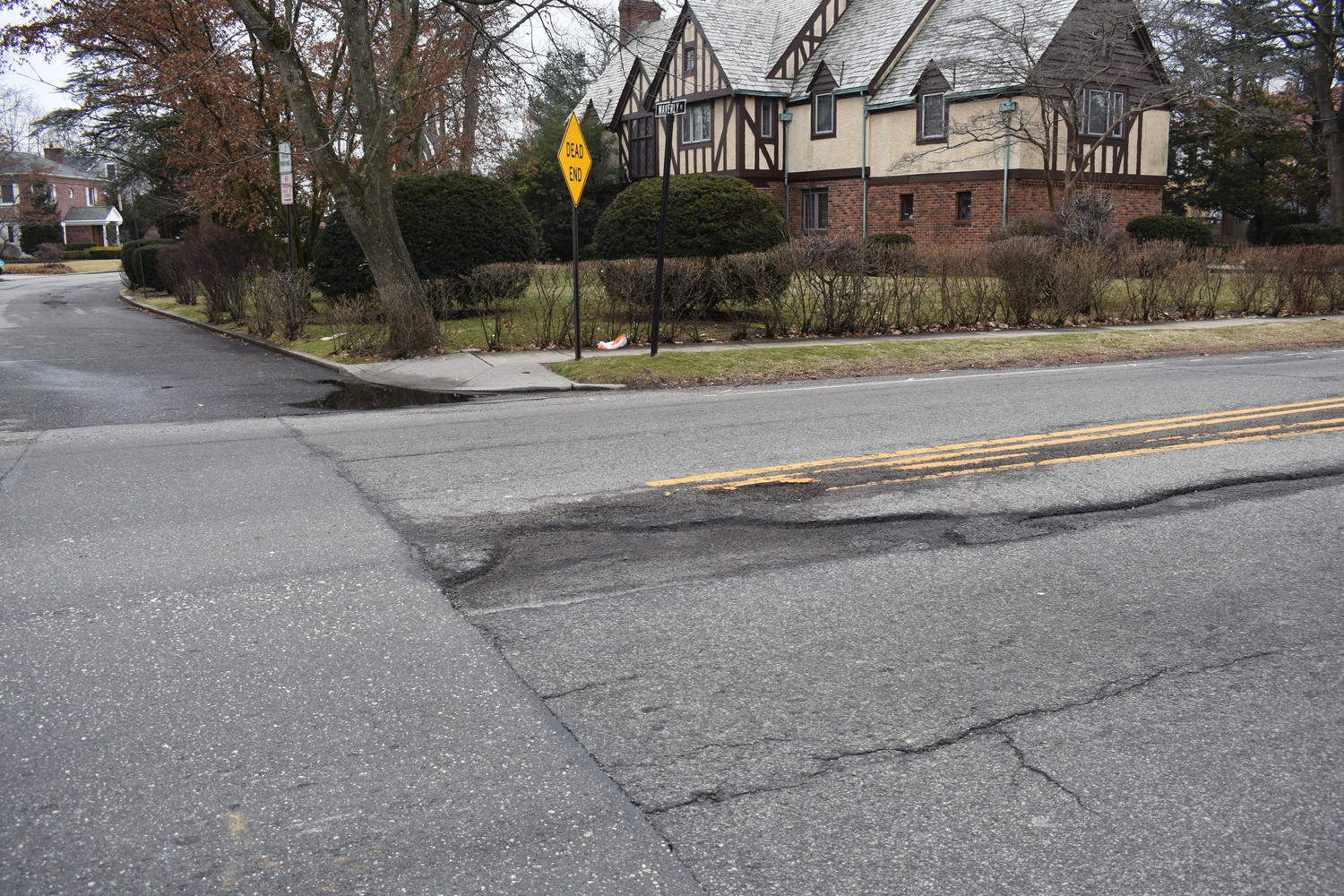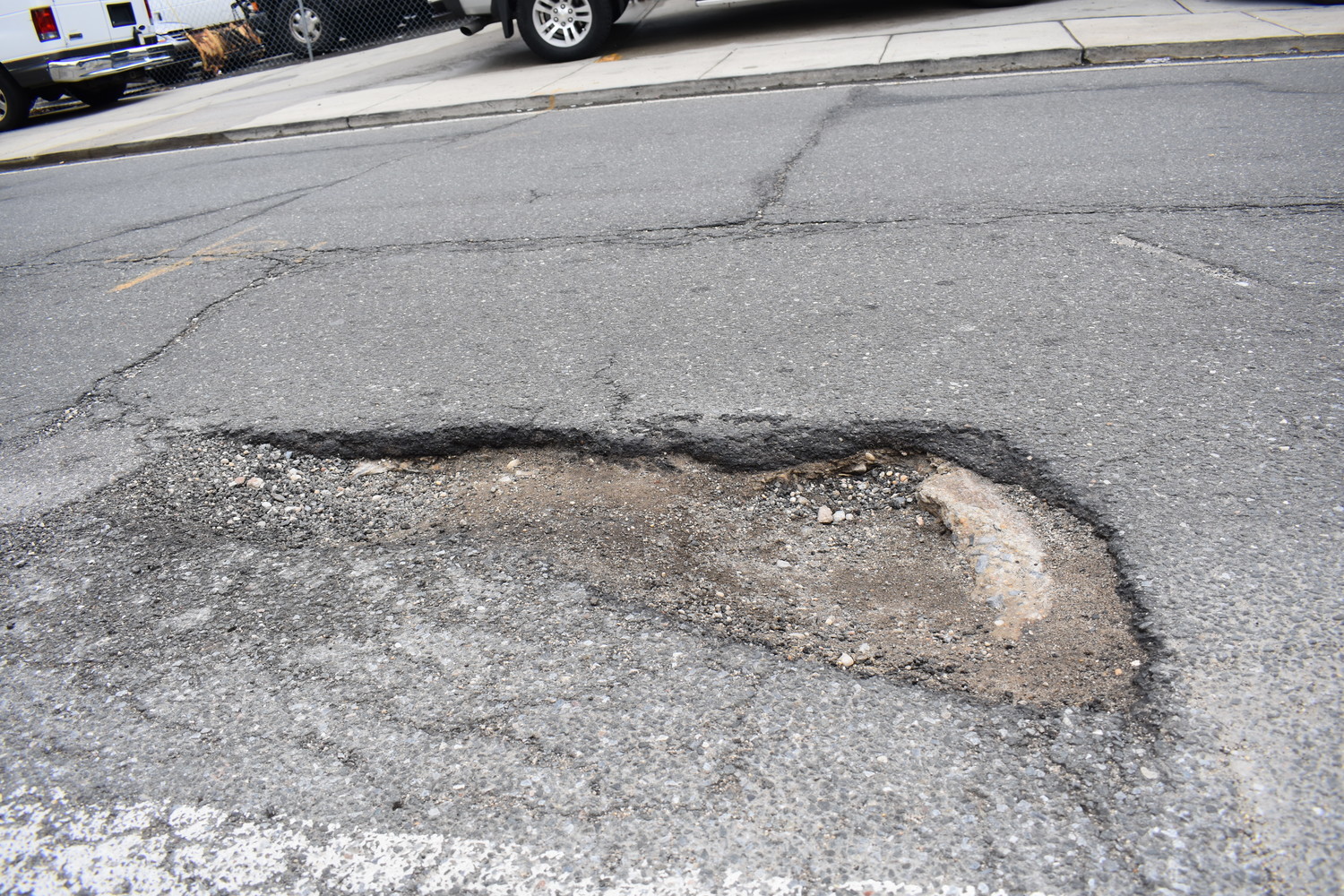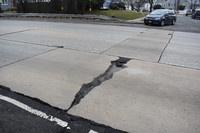The roads are cracking up in the Five Towns
Motorists beware: Potholes proliferate on Five Towns streets
It’s a thud that all motorists dread, and at this time of year it’s tough to avoid. Streets across the Five Towns have become minefields of potholes, and although most are nothing more than a nuisance, large potholes can damage a vehicle’s suspension, wheels and tires, and cause accidents.
Potholes typically originate from small cracks in the roads caused by extended use. Water seeps through these cracks in the asphalt and freezes, forcing the cracks to expand in a process called frost heaving. That’s the reason potholes are often at their worst as winter turns to spring, with temperature still dropping below freezing at night.
As the cracks grow, water can penetrate as deep as the soil beneath the road, where, when it freezes, it can cause the road to bulge. When the ice melts, it leaves an empty space beneath the road surface, and as vehicles drive over that spot, it collapses, and drivers have a new pothole to avoid.
David Friedman, president of the Hewlett-Woodmere Business Association, was driving on Dubois Avenue in Valley Stream, near Mill Road, last week when he hit a particularly bad pothole. “It was dark and I couldn’t see it,” Friedman wrote in an email. “It ripped my tire open.” The repair cost him $300.
Although they don’t have jurisdiction over many of the Five Town’s major roads, such as Broadway, Rockaway Turnpike and Peninsula Boulevard, local villages are trying to curb the pothole problem. Frank Parise, Cedarhurst’s superintendent of public works, said that workers have been filling potholes since the first snowfall of the season. “[The village] is responsible for about 17 miles of road,” Parise explained. “We’ve brought in about 16 tons of cold asphalt from the plant in Farmingdale so far.”
The village plans to use cold asphalt, he said, until the local Rason Asphalt plant opens, which is typically around March 15. “Once the plant opens, we’ll step it up a lot,” Parise said. “We absolutely hope [the freezing and thawing cycle] will be over by then, but if not we’ll work around it.”
There are four methods of repairing potholes, according to the Federal Highway Administration. In throw-and-roll, the most basic repair, the pothole is filled with asphalt, which is then compacted, typically by truck tires. In semi-permanent, which highway officials consider the best method, after water and debris are removed and the hole is shaped into a square, it is filled and then compacted with a smaller device. In spray injection, water and debris are blown out of the pothole, which is sprayed with a binder before asphalt is blown in and the area is covered. Finally there’s the edge seal method, in which workers use the throw-and-roll method, and then return to patch the edges after the section has dried.
Friedman, while frustrated about his tire, added that after he reported the pothole to Valley Stream village officials, it was repaired. “After I called, I saw a pothole crew filling on Dubois Avenue in Gibson,” he wrote.
Mary Studdert, spokeswoman for the Nassau County Department of Public Works, said that the county encourages residents to report potholes to the department’s 24/7 hotline, (516) 571-6900, and that it will either fill them within 24 to 48 hours or forward the requests to the appropriate municipality. “The county fills potholes year round as needed,” Studdert said. “Potholes are our road maintenance department’s top priority right now. We have crews out every day.”
Have an opinion about Five Towns roads? Send your letter to the editor to jbessen@liherald.com.















